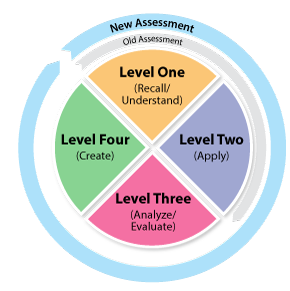Shifting to the Common Core English/Language Arts and Mathematics

Shifting to the Common Core is a teacher resource that addresses deeper levels of knowledge.
The Common Core State Standards require students to demonstrate deeper levels of thinking than ever before. Previous high-stakes assessments tested what students could recall, understand, and apply. The new assessments measure those levels, but also require students to carefully analyze information, evaluate it, and synthesize effective responses.
Shifting to the Common Core helps teachers address these deeper-thinking levels in their classrooms through strategies and activities, rubrics and model responses, and options for remediation.
What skills does Shifting to the Common Core address?
Shifting to the Common Core English/Language Arts helps teach students strategies for
- analyzing what they read, see, and hear;
- evaluating information and testing it for reliability; and
- synthesizing arguments by drawing evidence from texts and using it in new forms.
Shifting to the Common Core Mathematics helps teach students strategies for
- analyzing information they receive in text and graphical presentations;
- evaluating information and testing it for reliability; and
- creating information and organizing it in new forms.
How does Shifting to the Common Core help my students?
With Shifting to the Common Core, students learn the specific strategies and skills they need to think more deeply. By developing these deeper-thinking skills, students improve their comprehension across the curriculum, raise their grades, and increase their success on Common Core assessments.
Choose a grade level below to discover further details about specific skills your students will learn:
ELA
Grades 2–3 Grades 4–5 Grades 6–8 Grades 9–12
Math
Grades 2–3 Grades 4–5 Grades 6–8 Grades 9–12

